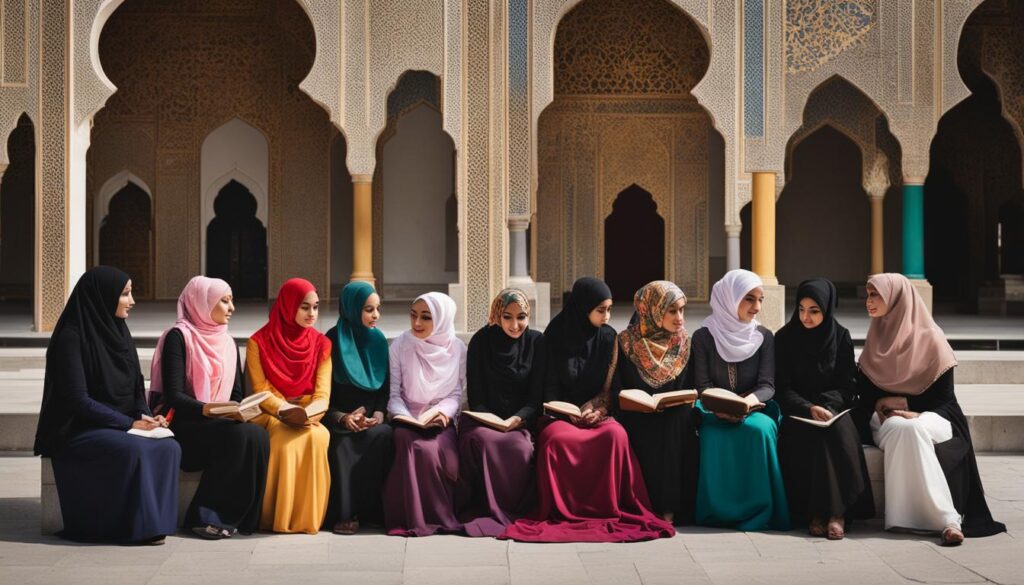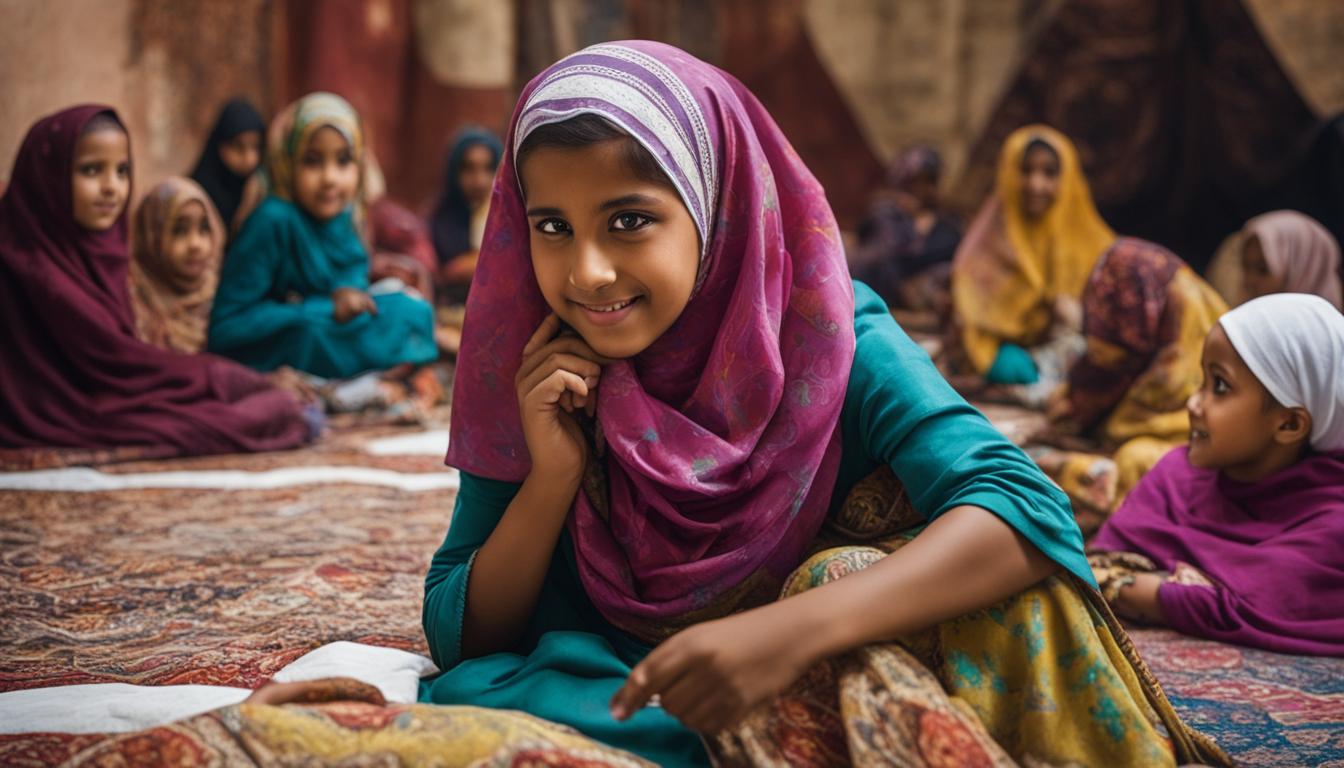In the diverse world of Islam, there is no definitive answer to the question of when Muslim women begin to wear a headscarf. Unlike what some may assume, the Quran does not specify an age at which girls should start covering their hair. This decision is influenced by factors such as cultural traditions, family values, and individual beliefs.
While some Muslim girls may start wearing the headscarf as early as nine or ten years old, others may choose to embrace it later in life. The age at which a woman begins to wear a headscarf can vary from one individual to another, as well as across different Muslim communities.
The decision to wear a headscarf is deeply personal and can be influenced by a variety of factors. Some families may believe it should be worn at puberty, while others may view it as a choice to be made by the individual when they feel ready. It is important to recognize that there is no one-size-fits-all answer to this question, as it is a matter of personal interpretation and religious understanding.
Key Takeaways:
- The age at which Muslim women begin to wear a headscarf varies among individuals and communities.
- The Quran does not specify an age requirement for wearing a headscarf.
- Wearing a headscarf is influenced by cultural traditions, family values, and individual beliefs.
- Some Muslim girls start wearing the headscarf at a young age, while others may choose to wear it later in life.
- The decision to wear a headscarf is personal and can be influenced by factors such as puberty, readiness, and personal interpretation of religious teachings.
The Cultural Significance of the Headscarf in Muslim Culture
The headscarf, also known as the hijab, holds great cultural significance in the Muslim culture. It serves as a symbol of modesty, piety, and respect for God. For Muslim women, wearing a headscarf is not only a religious obligation but also a way to express their identity and faith. By covering their hair, they distinguish themselves from non-Muslims and demonstrate their commitment to Islamic teachings.
The tradition of wearing a headscarf varies across different regions and communities, reflecting the diverse interpretations of Islam. In some societies, girls start wearing the hijab as early as nine or ten years old, while in others, they may not don it until later in their teenage years. This variation is influenced by personal beliefs, cultural customs, and religious interpretations.
The Symbolism of Modesty and Religious Devotion
The headscarf is a powerful symbol of modesty and religious devotion in Muslim culture. By covering their hair, Muslim women demonstrate their commitment to modesty and their desire to preserve their beauty for their spouse. It also serves as a reminder to prioritize inner beauty and character over external appearance.
Cultural Identity and Empowerment
Wearing the headscarf allows Muslim women to assert their cultural identity and strengthen their connection to their faith. It empowers them to embrace their heritage and preserve their religious values in a world that often challenges or misunderstands their beliefs. Through the headscarf, Muslim women find solidarity, belonging, and a sense of community with others who share their religious and cultural backgrounds.
Challenging Stereotypes and Misconceptions
The headscarf also plays a crucial role in challenging stereotypes and misconceptions about Muslim women. It serves as a visual representation of their faith and dispels negative assumptions that may be associated with Islam. By confidently wearing the headscarf, Muslim women defy stereotypes and foster understanding, tolerance, and acceptance in society.
Views on when Muslim Girls Should Begin Wearing the Hijab
When it comes to the appropriate age for Muslim girls to start wearing the hijab, there are differing views within the Muslim community. Some believe that girls should begin wearing the hijab at puberty, as it is seen as a marker of maturity and readiness for religious obligations. This view is based on the belief that puberty is a significant turning point in a girl’s life, marking the onset of adulthood and the beginning of accountability for one’s actions.
However, there are also those who argue that girls should start wearing the hijab at a younger age, even before reaching puberty. They believe that introducing the hijab early on helps establish a sense of identity and fosters a connection with religious values from a young age. It is seen as a way to instill modesty, piety, and a sense of belonging to the Muslim community.
On the other hand, there are individuals who believe that the decision to wear the hijab should be left to the personal choice of the individual when they feel ready. They argue that forcing young girls to wear the hijab may lead to resentment or a superficial understanding of its significance. Instead, they advocate for providing girls with education and guidance about the hijab, allowing them to make an informed decision about when they are ready to embrace it.
The Impact of Cultural Customs and Personal Beliefs
The differing views on when Muslim girls should begin wearing the hijab are often influenced by cultural customs and personal beliefs. Cultural traditions play a significant role in shaping the age at which girls start wearing the hijab, as it can vary widely across different regions and communities. Likewise, personal beliefs and interpretations of religious teachings play a crucial role in determining individual choices regarding the hijab.
It is important to recognize that there is no one-size-fits-all approach when it comes to the age requirement for wearing the hijab in Muslim culture. The decision ultimately rests with the individual and their personal understanding of faith, values, and readiness. Respect and understanding for diverse perspectives within the Muslim community are key to fostering a supportive and inclusive environment for all.
Traditions and Practices of Veiling in Muslim Societies
Veiling practices in Muslim societies encompass a rich tapestry of traditions that have evolved over time, shaped by cultural customs, religious interpretations, and regional influences. Here, we explore the different types of veils worn in Islam and the historical roots behind these practices.
Types of Veils
One of the most common types of veils is the hijab, which covers the head and neck while leaving the face exposed. It serves as a symbol of modesty and is worn by women in various Muslim societies. Another style is the niqab, which veils the face, leaving only the eyes visible. The burqa, on the other hand, fully covers the body, including the face, with crocheted eye openings. The chador, a long black or dark-colored coat, is worn primarily in Iran and some Central Asian countries. Additionally, the shalwar qamis, a traditional outfit comprising loose-fitting trousers and a tunic, is worn by both men and women in South Asian Muslim communities.
Historical Significance
Veiling practices predate Islam and have historical roots in various cultures. In ancient Mesopotamia, for example, women wore veils as a symbol of social status. In the Byzantine Empire, veiling was associated with married women, while elite women in ancient Greece covered their heads as a sign of respect. With the advent of Islam, veiling took on new dimensions, becoming entwined with religious teachings and evolving according to local customs and social norms.
Diverse Interpretations
It is important to note that veiling practices can differ significantly across Muslim societies due to diverse interpretations of religious texts, regional customs, and individual choices. Some communities place greater emphasis on veiling as a religious obligation, while others view it as a personal choice or cultural tradition. Understanding the nuances and diversity within veiling practices is crucial for appreciating the complexity and richness of Muslim societies.

In conclusion, veiling practices in Muslim societies encompass a wide array of traditions and customs. The hijab, niqab, burqa, chador, and shalwar qamis are just a few examples of the diverse types of veils worn by Muslim women and men. These practices have historical significance and are influenced by cultural, religious, and regional factors. Recognizing the diversity and individual choices within veiling practices is essential for fostering understanding and respect in our increasingly interconnected world.
Conclusion
The age at which Muslim women begin wearing a headscarf in Islam is a complex and individual decision. It is not specified in Islamic scriptures, allowing for a range of interpretations and practices. The timing can vary greatly among individuals and communities, influenced by cultural traditions, religious beliefs, and personal readiness.
While some Muslim girls may start wearing the hijab at a young age, others may choose to do so later in life. It is important to respect each person’s choice and understanding when discussing the topic of headscarf-wearing in Islam. The decision to wear a headscarf holds personal significance for Muslim women, reflecting their dedication to modesty, piety, and religious devotion.
The headscarf is deeply rooted in cultural values and serves as a symbol of identity for Muslim women. It distinguishes them as followers of Islam and represents their commitment to the teachings of their faith. However, it is crucial to recognize that the practice of veiling is not monolithic across Muslim societies, as practices vary based on customs, regional influences, and personal interpretations.
In conclusion, the age to wear a headscarf in Islam is a multifaceted subject that cannot be simplified to a single answer. It is a personal and nuanced decision shaped by various factors. By understanding and respecting the diversity of practices and interpretations, we can engage in meaningful discussions that promote mutual understanding and respect for individuals’ choices.
FAQ
At what age do Muslim girls typically begin wearing the hijab?
The age at which Muslim girls start wearing the hijab varies. Some may start wearing it when they are nine or ten years old, while others may wait until later in life. The decision depends on individual, family, and cultural factors.
What is the cultural significance of the headscarf in Muslim culture?
The headscarf, or hijab, is seen as a symbol of modesty, piety, and respect for God in Muslim culture. It is also a way for Muslim women to differentiate themselves from non-Muslims and adhere to the teachings of Islamic faith.
What are the different views on when Muslim girls should begin wearing the hijab?
There are different views among scholars and individuals in the Muslim community. Some believe it should be worn at puberty, while others think it should be worn at a younger age. Ultimately, it is a personal decision influenced by cultural customs and personal beliefs.
What are the different types of veils in Muslim societies?
The most common type of veil is the hijab, which covers the head and neck but leaves the face exposed. Other types include the niqab, which covers the face except for the eyes, and the burqa, which covers the entire body. The chador and shalwar qamis are also worn in some Muslim societies.
Is there a prescribed age for Muslim women to begin wearing a headscarf?
No, there is no prescribed age in Islamic scriptures for Muslim women to begin wearing a headscarf. The decision is personal and influenced by cultural traditions, religious beliefs, and personal readiness.

